Eco Dilemmas Solved: Bamboo vs. Sugar Cane Explained

Introduction Sustainable living pushes us to choose eco-friendly alternatives for everyday items. Two popular materials in tableware and packaging are bamboo and sugarcane bagasse. Bamboo, a fast-growing grass, is used in products like bamboo plates, bowls, and cutlery, while sugarcane bagasse is the fibrous byproduct of sugar extraction turned into sugarcane tableware (including bagasse plates). Both are biodegradable, compostable and renewable, yet they differ in performance, cost, and environmental impact. This article breaks down the core differences between bamboo and sugarcane products to help you make an informed, eco-friendly choice. The Core Eco Dilemma: Bamboo vs. Sugarcane At the heart of the debate are two distinct approaches to sustainable tableware: […]
生分解性包装資材をどう選ぶか?

環境に対する意識が高まる今日、適切な生分解性包装資材を選択することは、エコロジカルフットプリントの削減に努める企業にとって不可欠です。この包括的なガイドでは、様々な生分解性素材-サトウキビバガス、コーンスターチ、PLA、CPLA、食品用紙包装-について、そのユニークな特性、長所と短所、実際の用途を検証しています。専門家の意見、科学的データ、ケーススタディをもとに、お客様のニーズに最適な環境に優しいパッケージングソリューションを選択するための明確なロードマップを提供することを目的としています。生分解性包装材料は、微生物の働きによって自然に分解されます。何世紀にもわたって残留する可能性のある従来のプラスチックとは異なり、これらの素材は無害な化合物に分解されるため、埋立地の蓄積や汚染を減らすことができます。しかし、すべての生分解性素材がそうであるとは限りません。
Is Sugarcane Safe & Healthy – Benefits of Sugarcane
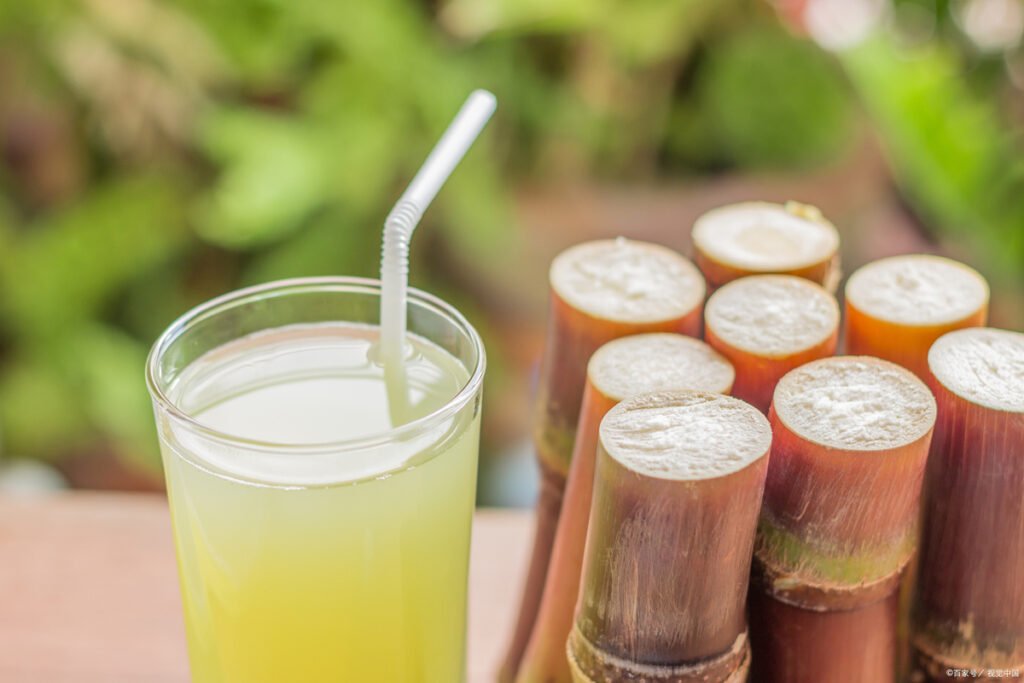
Sugarcane is often associated with sweet treats, but it is much more than a sugar source. This incredible plant offers various health benefits, and applications in eco-friendly industries, and is supported by extensive scientific research. What Is Sugarcane? Sugarcane (Saccharum officinarum) is a tropical perennial grass that grows in warm and humid climates. Known for its tall, fibrous stalks, sugarcane is primarily cultivated for its sweet juice, which is rich in sucrose. Nutritional Profile of Sugarcane Sugarcane juice is a rich source of carbohydrates, mainly in the form of sucrose, which provides a quick energy boost. A standard serving of 240 ml contains approximately 250 calories and 50 grams of […]
バガスの用途

バガスは、サトウキビの茎を砕いて汁を搾り取った後に残る繊維状の残渣である。何十年もの間、バガスは農業廃棄物とみなされ、廃棄されたり燃やされたりすることが多かった。しかし、世界的に持続可能性への関心が高まるにつれ、バガスは多用途で環境に優しい原料として新たな価値を見出すようになった。今日、バガスは単なる副産物ではなく、再生不可能な原料への依存を減らす努力をする産業を支える資源なのです。バガスは主にセルロース、ヘミセルロース、リグニンから構成されており、構造的には木質繊維に似ている。この成分により、バガスは紙からパッケージングまで、さまざまな製品に再利用するのに必要な強度と柔軟性を備えている。その生産 [...]...
サトウキビ製品:持続可能な包装におけるサトウキビ製品の台頭とその先を包括的に見る
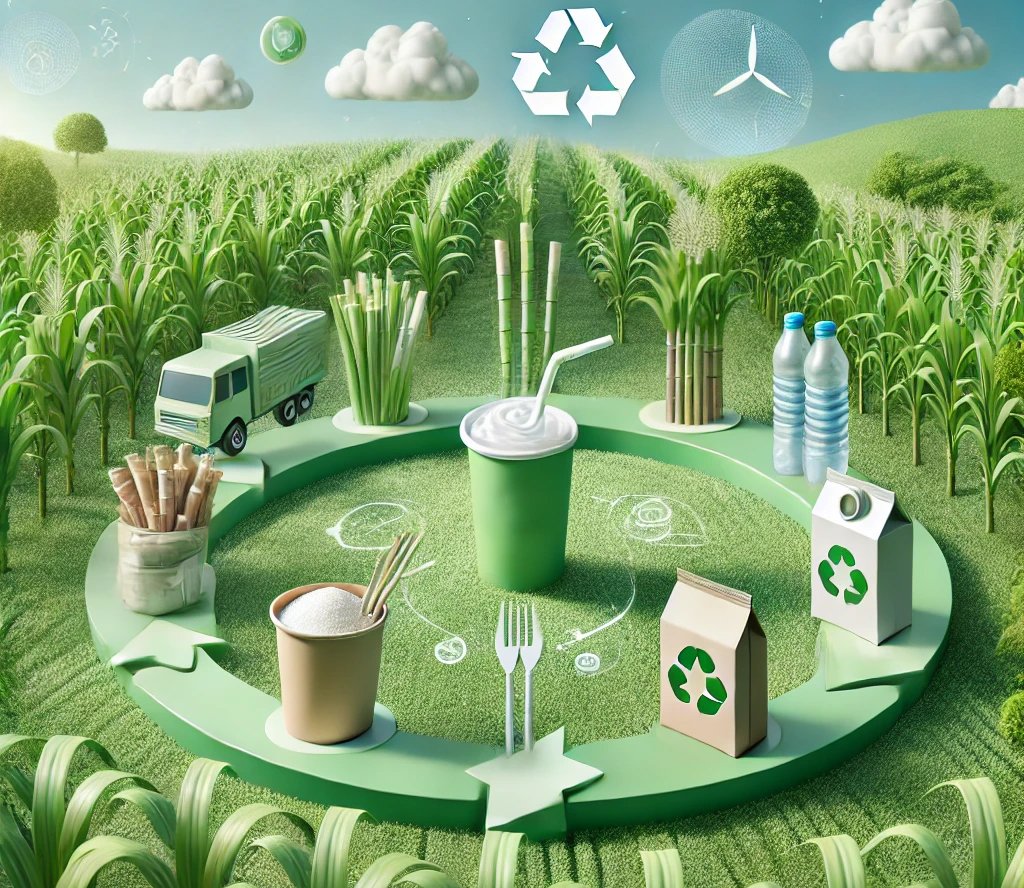
プラスチック廃棄物や二酸化炭素排出量の削減を目指し続ける中で、企業も消費者も同様に、機能性や費用対効果を損なわない再生可能な資源に注目している。サトウキビは熱帯の背の高い草で、歴史的に砂糖の生産に関連してきたが、驚くほど用途の広い原料として登場し、食品や飲料用途だけでなく、さまざまな工業製品や消費者製品にも利用されている。特にサトウキビ製品は現在、持続可能なパッケージング・ムーブメントの最前線にあり、より環境に優しい循環型経済を垣間見せている。この包括的なブログ記事は、サトウキビ製品がどのようなもので、どのようにパッケージング業界に革命を起こしているのか、科学的研究と市場データに裏打ちされた洞察をまとめたものである。[...]
コーンスターチとサトウキビバガスのパルプ食器の違い
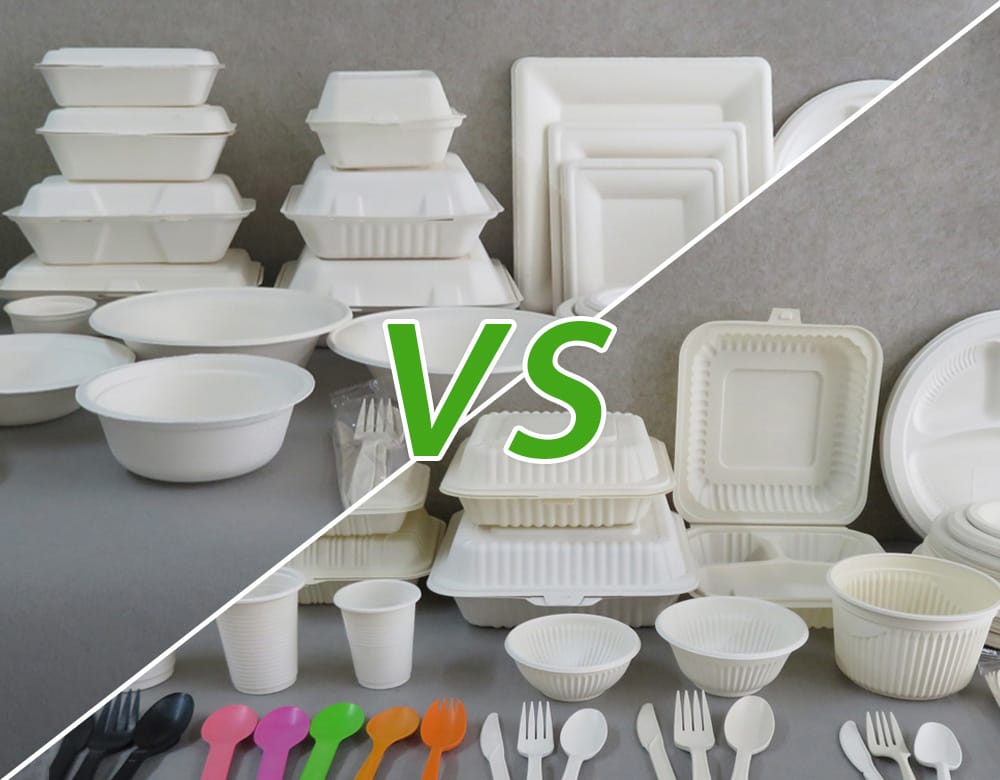
コーンスターチとサトウキビパルプの食器は採用しやすい素材で、生分解性でありながらプラスチックの代替品として使用できる。コーンスターチとサトウキビパルプは、地球に中立的でプラスチックに代わる持続可能な素材であり、早くも広く採用されている。
バガスとプラスチック容器:どちらの食品包装がより持続可能か?

食品包装業界では持続可能性が喫緊の課題となっており、企業も消費者も環境に優しい代替品へとシフトしている。最も一般的な食品包装資材であるバガスとプラスチックは、環境への影響についてよく比較されます。プラスチックが数十年にわたり市場を支配してきた一方で、バガスは持続可能な代替材料として台頭してきています。この記事では、両素材の特徴、利点、欠点を掘り下げ、長期的にどちらの選択肢がより持続可能かを評価します。バガスコンテナとは?バガスは、サトウキビ加工の副産物で、果汁を抽出した後に残るものです。この繊維状の素材を廃棄物として捨てる代わりに、生分解性で堆肥化可能な食品容器に再利用する。
バガスは生分解性で堆肥化可能か?
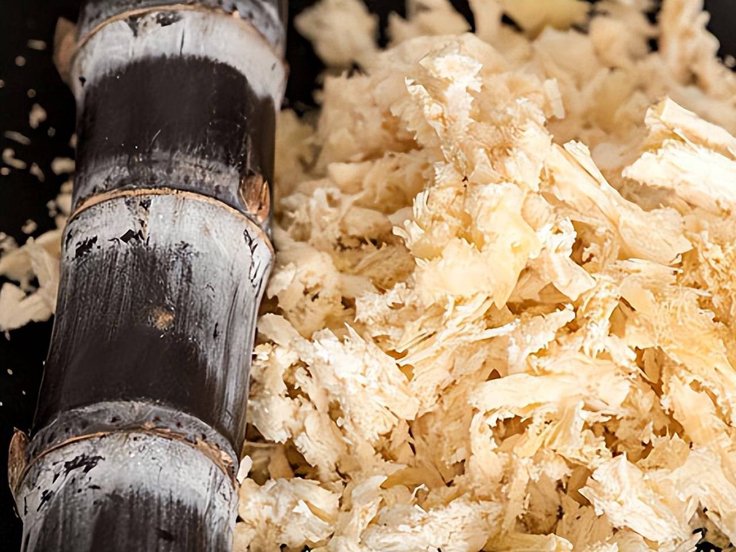
サトウキビ製造の残渣であるバガスは、そのグリーンな性質から注目されているが、生分解性や堆肥化性はどうなのだろうか?この記事では、バガスの用途、生分解性、堆肥化性など、バガスについて知っておくべきことをすべて解説する。まず、バガスの基礎知識から始めましょう。バガスとは?バガスは、サトウキビやソルガムなど、植物からジュースを抽出した後の繊維状の残渣です。もともとは砂糖製造の廃棄物と考えられていましたが、バガスは再生可能な環境に優しい代用品として様々な分野で認知されるようになってきました。世界が持続可能性に目を向ける中、その必要性はますます高まっている。
サトウキビのバガスは食べても安全か?
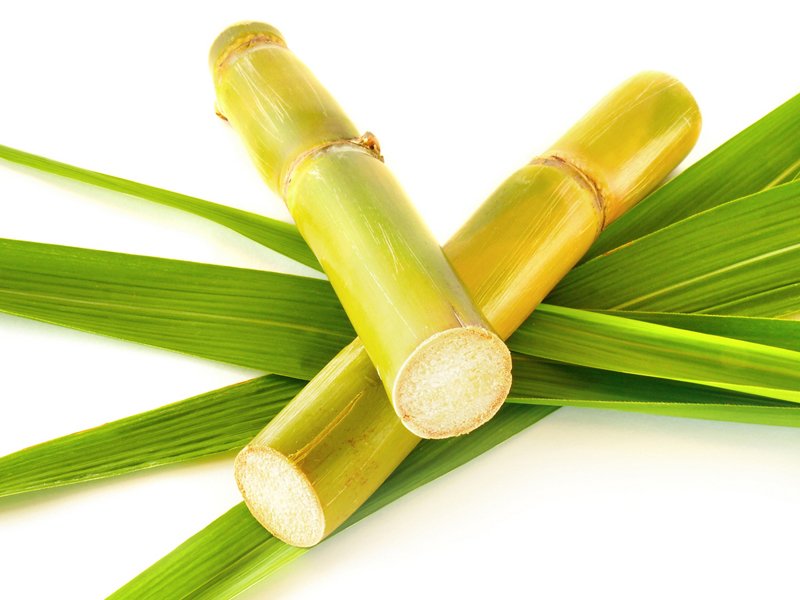
サトウキビは、甘い果汁、栄養価、そして環境に優しい素材を提供する、非常に用途の広い作物である。サトウキビの副産物の中でもサトウキビバガスは、果汁を搾った後に残る繊維状の残渣で、プラスチックの代替品として世界的に注目されている。この記事では、サトウキビバガスの食品としての安全性、サトウキビ消費との文化的なつながり、包装以外のさまざまな用途についてご紹介します。サトウキビバガスとは?サトウキビバガスとは、砂糖を抽出する際に残った繊維質の原料のことです。当初は廃棄物として扱われ、燃料として燃やされたこともあったが、現在では、バガスは以下のような多くの資源として利用されている:バガスの廃棄物から[...]への移行
私たちが捨てているバガス食器が、なぜインド人の現金収入源になったのか?
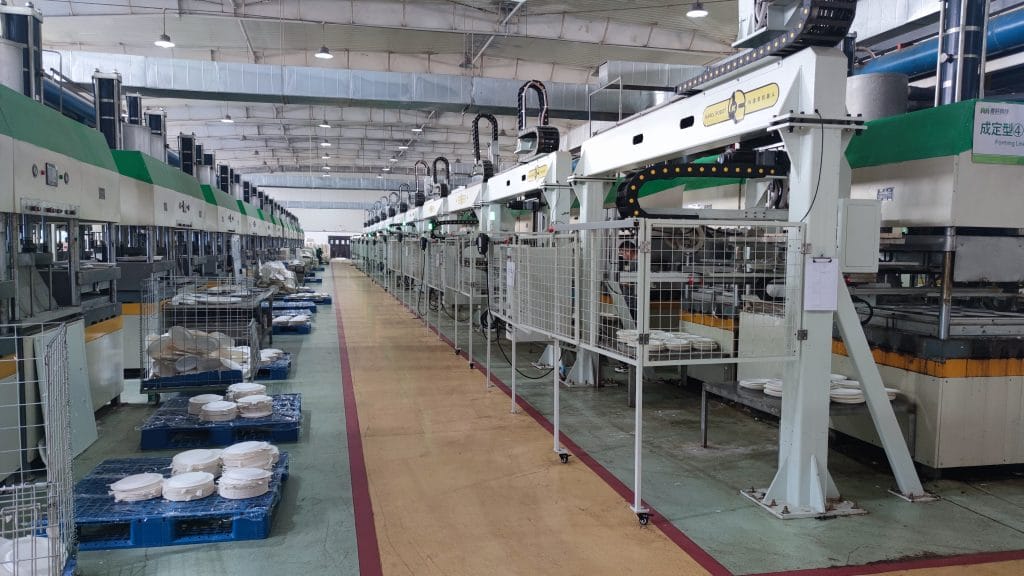
How India Turns Sugarcane Residue into Treasure Sugarcane residue, which no one wants in our country, has become the code for Indians to get rich, and they can earn tens of millions a year! What is the use of sugarcane residue? India’s sugarcane production ranks second in the world, second only to Brazil. There are many sugar factories of different sizes in the countryside of India. During the sugarcane harvest season, some factories need to squeeze hundreds of tons of sugarcane every day. The squeezed sugarcane juice becomes sugar after simple boiling and evaporation of water, and the remaining sugarcane residue gives factory managers a headache. Usually, these sugarcane residues […]
使い捨て食品容器の分解にかかる時間は?

Disposable food containers are ubiquitous in modern life, but their environmental impact varies greatly depending on their materials. Understanding the decomposition process and proper disposal methods is crucial for making sustainable choices. What Types of Disposable Food Containers? There are numerous kinds of disposable food containers meant for one-time use. They come with an assortment of characteristics that lead to a variety of challenges for the environment. Below are the most popular kinds: 1. Foam (Polystyrene) From takeaway places to fast food restaurants, lightweight foam food containers are a popular choice for many businesses. Economical in pricing waterproof foam food containers are widely used but non-fermentable, meaning they will remain […]
ワックス製テイクアウト容器の生分解・分解にかかる時間は?

テイクアウト容器はどこにでもあり、環境に大きな影響を与えている。このブログでは、ワックスのテイクアウト容器が分解・生分解されるのにかかる時間を、その素材、条件、持続可能性を考慮しながら調査する。テイクアウト容器(ワックスまたはプラスチックライニングの板紙)とは?テイクアウト容器は見た目も様々で、板紙に耐水性や耐油性を持たせるコーティングを施したものもある。ここでは3つの主なタイプを分析する: 1.ワックスコート板紙 これらのアイテムは通常、パラフィンまたは他の種類のワックスのコーティングが施されており、耐水性を高めている。この種のファストフード・パッケージのワックス・コーティングは、使用されているワックスの種類にもよるが、ゆっくりと相互分解する [...]...
紙皿ではなくバガスの皿を選ぶ5つの理由

利便性と持続可能性の両方を実現する最高品質のサトウキビプレートをお探しなら、バイオリーダーが最適です。最も純粋なサトウキビのバガスから作られた当社のプレートなら、利便性を犠牲にすることなく、使い捨てのプラスチックプレートをなくすことができます。Bioleaderのバガスプレートを選ぶことで、環境に良い影響を与えながら、罪悪感なく食事を楽しむことができます。
スクエアバガス製品総合ガイド

Square bagasse products are revolutionizing the packaging and tableware industry. Below is a deeper dive into their features, applications, production, and benefits. What is Bagasse? Bagasse is the fibrous pulp that remains after sugarcane stalks are crushed to extract juice. Historically, this byproduct was considered waste or used for burning. Today, bagasse has found a new purpose as a raw material for sustainable products. Production Process of Square Bagasse Products 1. Collection of Bagasse After extracting sugarcane juice, the residue is collected from sugar mills. 2. Pulping and Cleaning The bagasse is pulped, cleaned, and refined to remove impurities like lignin and hemicellulose. 3. Molding and Shaping Using advanced molding […]
Pulp Molded Cup Lids: The Future of Sustainable Alternatives

Pulp molded cup lids are an environmentally friendly beverage cover made of a combination of wood pulp, sugar cane pulp, or bamboo. These absorbable alternatives have been designed to serve as a replacement for plastic lids.
サトウキビバガスの食器が堆肥化条件下で完全に分解されるには、どのくらいの時間がかかりますか?

The time it takes for sugarcane bagasse tableware to fully degrade under composting conditions can vary significantly based on several factors, including: Emphasize and increase the compost temperature to a range that is usually the optimum temperature for the operation of the microorganisms and this is about 55 degrees centigrade. Once exposed to proper composting conditions, sugarcane bagasse tableware is expected to undergo biodegradation within weeks to two months. Neutral warm stove places extend the survivorship of enzymes within more thermizing than atmospheric temperatures. At the best circumstances, that is standard for most compost, which usually is active at about 55 to 70 degrees Celsius, with no hostile effect from […]
